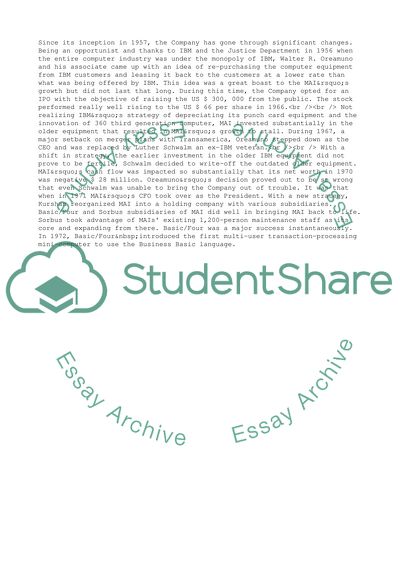Cite this document
(A Historical Perspective - MAI Systems Corporation dba Hotel Case Study, n.d.)
A Historical Perspective - MAI Systems Corporation dba Hotel Case Study. Retrieved from https://studentshare.org/management/1707519-management-assistance-incmai
A Historical Perspective - MAI Systems Corporation dba Hotel Case Study. Retrieved from https://studentshare.org/management/1707519-management-assistance-incmai
(A Historical Perspective - MAI Systems Corporation Dba Hotel Case Study)
A Historical Perspective - MAI Systems Corporation Dba Hotel Case Study. https://studentshare.org/management/1707519-management-assistance-incmai.
A Historical Perspective - MAI Systems Corporation Dba Hotel Case Study. https://studentshare.org/management/1707519-management-assistance-incmai.
“A Historical Perspective - MAI Systems Corporation Dba Hotel Case Study”, n.d. https://studentshare.org/management/1707519-management-assistance-incmai.


